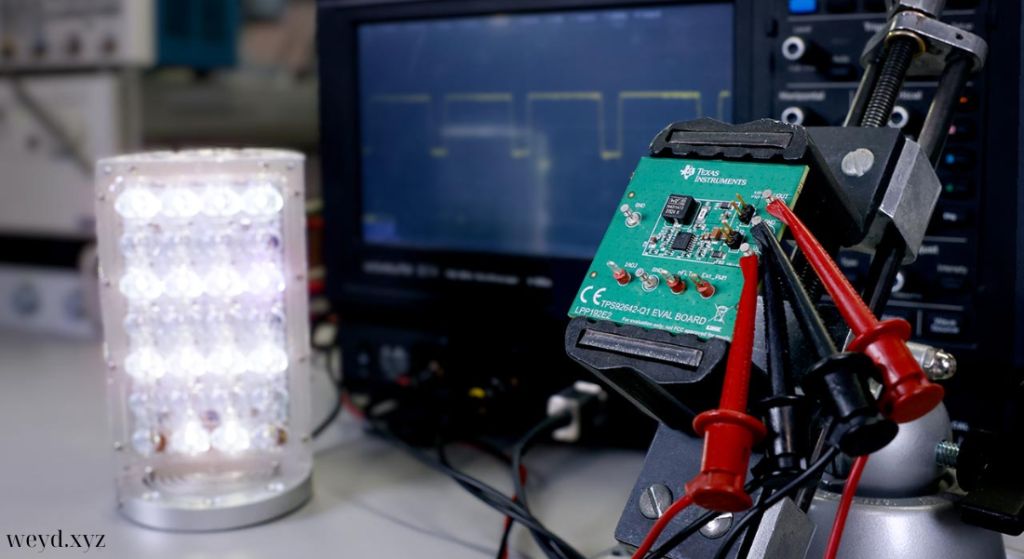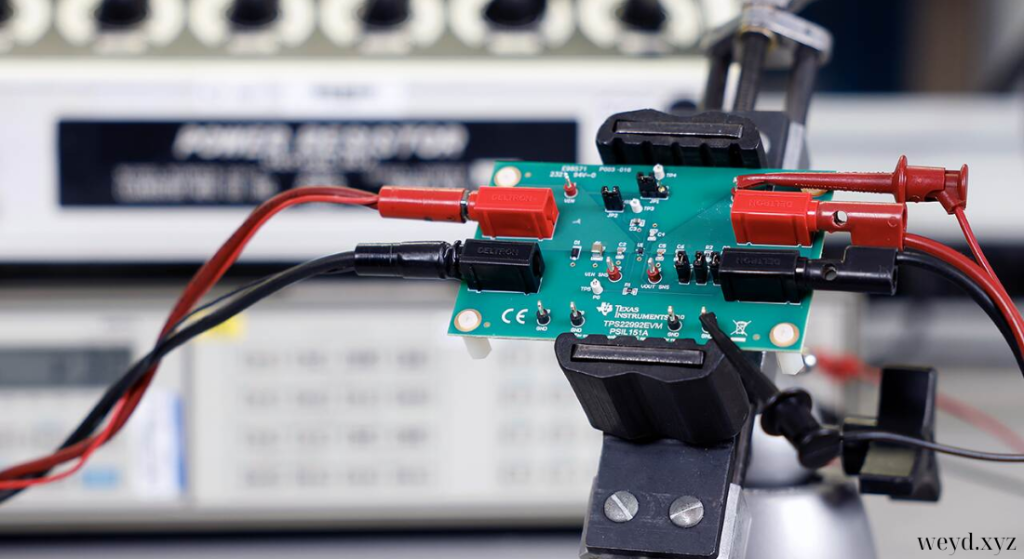In an era where efficient power management is crucial for the functionality and performance of electronic devices, voltage regulators have become indispensable components in many applications. Texas Instruments (TI) has established itself as a leader in the development of advanced voltage regulators, providing a diverse range of solutions designed to meet the growing demands of modern electronics. From consumer gadgets to industrial equipment, TI voltage regulators ensure stable power delivery, high efficiency, and reliability. This article will delve into the benefits of integrating TI voltage regulators into your projects, examining their features, applications across industries, and best practices for implementation.
Key Highlights
- Overview of TI Voltage Regulators: An in-depth look at the types of voltage regulators offered by Texas Instruments and their roles in electronic design.
- Key Features and Benefits: Exploring the essential features that make TI voltage regulators reliable choices for power management.
- Applications Across Industries: How TI voltage regulators are utilized in various sectors to enhance efficiency and performance.
- Best Practices for Integration: Tips for effectively implementing TI voltage regulators in your designs.
- Evaluating Your Power Management Needs: Techniques for selecting the right TI voltage regulator for your specific application.
1. Overview of TI Voltage Regulators: A Comprehensive Look
Texas Instruments offers a wide range of voltage regulators designed to suit different applications and power requirements. The primary types of voltage regulators offered by TI include:
- Linear Regulators: These devices provide a simple method for maintaining a constant output voltage from a varying input voltage. They are known for their low dropout voltage and low noise, making them suitable for sensitive applications, including audio equipment and RF devices. Linear regulators are ideal in scenarios where power efficiency is less critical, but precision is essential.
- Switching Regulators: TI’s switching regulators offer high efficiency, making them suitable for applications requiring substantial power conversion. They function by rapidly switching the output on and off, allowing for voltage adjustment with minimal energy loss. These regulators can be buck (step-down), boost (step-up), or buck-boost (combination of both), enabling flexibility in design.
- Low-Dropout Regulators (LDOs): A specific type of linear regulator, LDOs maintain regulation with a very small input-to-output voltage differential. They are particularly useful in battery-powered applications where maximizing battery life is crucial, offering an efficient solution for power management without introducing significant complexity.
- Integrated Power Management Solutions: TI also provides integrated solutions that combine multiple voltage regulators and additional features into a single package. This integration not only simplifies the design but also reduces the footprint of the circuit, making it ideal for compact applications.

2. Key Features and Benefits: Powering Your Projects
Integrating TI voltage regulators into your designs offers numerous advantages that can significantly enhance project outcomes:
- High Efficiency: TI’s switching regulators are designed for maximum efficiency, often exceeding 90%. This efficiency is essential for minimizing heat generation and prolonging the life of electronic components, particularly in applications with limited thermal management capabilities. High efficiency translates to lower operating costs and improved overall system performance.
- Compact Design: Many TI voltage regulators come in small packages, allowing for space-saving designs in applications where board space is limited. This compactness is especially beneficial for portable devices, wearables, and IoT applications where real estate on the PCB is at a premium.
- Robust Performance: TI voltage regulators are engineered to deliver consistent performance across various operating conditions. They can handle input voltage variations and transient loads without compromising output stability, ensuring reliable operation in diverse environments.
- Advanced Features: TI’s voltage regulators often include advanced features such as adjustable output voltage, soft-start capabilities, and thermal protection. These features enhance overall system reliability and user experience, making it easier for designers to create robust power management solutions.
- Enhanced Protection: Many TI voltage regulators come equipped with built-in protections against over-voltage, under-voltage, over-current, and thermal overload. These safety features help safeguard sensitive components and maintain system integrity, providing peace of mind in mission-critical applications.
3. Applications Across Industries: Versatile Usage
TI voltage regulators find extensive use across multiple industries, showcasing their versatility and effectiveness:
- Consumer Electronics: TI voltage regulators are pivotal in smart appliances, smartphones, tablets, and other consumer devices. They ensure stable power supplies for critical components, contributing to overall device reliability and performance. Features such as low noise and compact design enhance user experiences by enabling high-quality audio and video playback.
- Automotive: In the automotive sector, TI voltage regulators are used for powering infotainment systems, sensors, and advanced driver-assistance systems (ADAS). Their robustness and reliability are crucial for maintaining performance in harsh automotive environments, ensuring safety and functionality during operation.
- Industrial Automation: In industrial settings, TI voltage regulators facilitate the reliable operation of machinery and equipment. They are essential in applications such as process control, robotics, and data acquisition systems, where accurate power management is vital for optimal performance.
- Healthcare: Medical devices rely on TI voltage regulators to ensure accurate power management for critical functions. Reliable voltage regulation is essential for devices such as patient monitors, imaging equipment, and laboratory instruments, where precision and reliability directly impact patient safety and treatment outcomes.
- Telecommunications: In telecommunications infrastructure, TI voltage regulators support a variety of functions, from powering communication equipment to maintaining stable voltages in data centers. High-performance voltage regulation ensures that network reliability is maintained, facilitating uninterrupted communication.
4. Best Practices for Integration: Ensuring Successful Adoption
To effectively integrate TI voltage regulators into your projects, consider the following best practices:
- Define Your Requirements: Clearly outline your application’s power requirements, including input voltage range, output voltage, current demand, and efficiency needs. Understanding these specifications will guide your component selection and design process.
- Select the Right Regulator: Choose a TI voltage regulator that aligns with your project specifications. Consider factors such as efficiency, thermal performance, and the specific features required for your application. Evaluate whether a linear or switching regulator is more appropriate based on your design constraints.
- Utilize Development Tools: Take advantage of TI’s development tools and resources, including evaluation boards and reference designs, to streamline the development process and reduce time-to-market. These tools help in prototyping and testing your designs quickly, allowing for rapid iterations.
- Engage Technical Support: TI offers robust technical support to assist with integration challenges and optimization. Their experts can provide valuable insights to enhance your project, helping you troubleshoot issues and maximize performance.
- Conduct Rigorous Testing: Implement thorough testing procedures to ensure that the voltage regulator performs as expected under various conditions. Validate your system’s design against real-world scenarios to confirm reliability and performance.
5. Evaluating Your Power Management Needs: Selecting the Right Voltage Regulator
When choosing a TI voltage regulator for your project, it’s essential to evaluate your specific needs:
- Performance Requirements: Assess the performance characteristics needed for your application, including load regulation, transient response, and line regulation. Higher precision and tighter regulation may be necessary for sensitive applications, while less critical applications may allow for more flexibility.
- Power Efficiency: Determine the efficiency requirements for your application. In battery-operated devices, maximizing efficiency can lead to extended battery life, making it a critical consideration. Selecting a regulator with high efficiency in the expected load range is essential.
- Thermal Management: Evaluate the thermal performance of the voltage regulator, particularly in high-current applications. Consider heat dissipation requirements and whether additional cooling solutions may be necessary to maintain optimal performance.
- Cost Considerations: Take into account your budget and the total cost of ownership, including development tools, licensing, and potential production costs. While some regulators may have a higher initial cost, the long-term benefits in performance and reliability can justify the investment.


